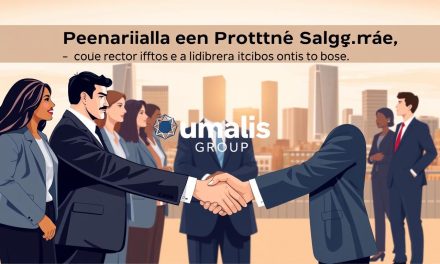Imagine this: you’re competing against countless professionals offering similar expertise. Clients struggle to see why they should choose you. Does this sound familiar? In today’s saturated markets, lasting stability doesn’t come from generic solutions—it’s built by creating irreplaceable value that resonates deeply with your audience.
For independent professionals, the key lies in moving beyond basic offerings. It’s not about adding flashy extras, but refining what makes your work uniquely impactful. When you align your strengths with clients’ unspoken needs, you transform transactions into trusted partnerships. This approach reduces reliance on price competition and fosters predictable growth.
Consider how diversifying your client base complements this strategy. By understanding varied customer priorities, you can craft tailored solutions that maintain relevance across economic shifts. The result? A business that thrives not just today, but for years to come.
Table of Contents
Key Takeaways
- True competitive advantage comes from depth, not breadth, of value
- Client loyalty grows when solutions address specific pain points
- Strategic positioning reduces vulnerability to market fluctuations
- Tailored approaches outperform generic « one-size-fits-all » models
- Consistent revenue stems from becoming irreplaceable, not just available
Understanding Service Differentiation
True professional security starts with being unmistakably distinct in your field. While technical skills get you in the door, lasting recognition comes from how you solve problems others can’t. This principle forms the foundation of creating irreplaceable value in client relationships.
The Core Concept Explained
A well-crafted approach focuses on attributes that make your work immediately recognizable. It’s not about being different for difference’s sake—it’s about aligning your strengths with unmet needs. As one industry leader notes:
« The best professionals don’t just meet expectations; they redefine what’s possible. »
Stability Through Strategic Positioning
When you anchor your practice in specific expertise, three key benefits emerge:
- Reduced price sensitivity: Clients pay premiums for tailored solutions
- Predictable demand: Your niche becomes your reputation
- Long-term partnerships: Customers return for your unique perspective
This strategic alignment transforms your business from disposable vendor to essential partner. By filling value gaps competitors overlook, you create advantages that withstand market shifts. The result? A career built on purpose, not price tags.
Identifying and Aligning with Customer Needs in Differentiation
Successful professionals don’t guess client priorities—they uncover them through systematic analysis. The path to becoming indispensable starts by decoding what your specific customer groups truly value, not just what they initially request.
Analyzing Specific Customer Needs
Deep insights come from combining quantitative data with qualitative discovery. Structured interviews reveal hidden pain points, while behavioral tracking shows how clients interact with existing solutions. One marketing director shared:
« We discovered 73% of clients prioritized speed over cost—a game-changer for our resource allocation. »
Effective research digs beyond surface-level requests to identify emotional drivers. Are clients seeking reassurance? Efficiency? Industry recognition? These unspoken customer needs shape purchasing decisions more than technical specifications.
Tailoring Services to Meet Market Preferences
Adaptation doesn’t mean reinventing your core offering. Instead, create modular solutions that address specific customer needs across segments. For example:
- Startups: Flexible payment models
- Enterprise clients: Compliance-focused add-ons
- Nonprofits: Impact measurement frameworks
Continuous market monitoring ensures your adjustments align with evolving preferences. When a French tech hub saw rising demand for AI integration, they introduced workshop packages explaining practical applications—tripling client retention within 18 months.
This alignment creates self-reinforcing growth. Clients who receive tailored services become references, attracting others with similar priorities. The result? A business model that scales through relevance, not relentless promotion.
Innovative Strategies for Unique Service Offerings

The secret to lasting relevance lies in crafting solutions others haven’t imagined. While competitors focus on incremental improvements, forward-thinking professionals build unique value through bold experimentation. This approach transforms standard offerings into memorable experiences that clients can’t find elsewhere.
Incorporating Advanced Technology
Smart tech integration amplifies your expertise without sacrificing personalization. AI-driven analytics help predict client needs before they arise, while automation handles repetitive tasks. One consultant shared:
« Our custom dashboard reduced reporting time by 65%, freeing us to focus on strategic advice clients truly value. »
Creative Approaches to Stand Out
Break industry norms by borrowing successful concepts from unrelated fields. A financial advisor boosted engagement by adapting gamification techniques from app developers. Consider these unconventional pairings:
- VR simulations for real estate consultations
- Subscription models for legal services
- Interactive workshops replacing static reports
Leveraging Exclusive Benefits
Build competitive walls through assets others can’t replicate. Partner with niche software providers or develop proprietary assessment tools. When clients gain access to specialized resources through your work, they associate those benefits directly with your brand.
These strategies create compounding advantages. Early adopters of hybrid tech/human models report 40% higher client retention than industry averages. The key? Use innovation to enhance—not replace—your core strengths.
Customization and Personalization: Best Practices

In a world where generic solutions fade into background noise, tailored approaches become your signature. The art of personalization transforms routine interactions into memorable journeys—where clients feel understood, not just served.
Data-Driven Service Customization
Modern customization starts with insights, not assumptions. By analyzing customer behavior patterns and success metrics, you uncover hidden opportunities. One consulting firm found clients using their portal after hours adjusted pricing models—resulting in 28% higher satisfaction.
Effective systems track three core elements:
- Communication preferences across channels
- Decision-making timelines
- Value perception triggers
This intelligence lets you craft solutions that align with individual preferences while maintaining operational efficiency. As noted in our guide to user experience strategies, small adjustments create disproportionate impact.
Creating Bespoke Customer Experiences
True personalization balances consistency with surprise. A tax advisor increased referrals by sending customized video summaries instead of PDF reports. The key? Matching delivery methods to each client’s learning style.
Consider these experience enhancers:
- Adaptive project timelines based on urgency signals
- Modular service packages that evolve with needs
- Culturally-aware communication frameworks
When experiences feel uniquely crafted, clients become advocates. They don’t just remember what you did—they remember how you made them feel capable and valued.
Leveraging Superior Quality for a Strong Brand Image
In crowded markets, excellence becomes your signature. Clients remember how you made them feel through superior quality that leaves competitors trailing. This commitment shapes perceptions, turning transactions into trust-building milestones.
Consistency Drives Recognition
Quality isn’t a checkbox—it’s a culture. Establish clear benchmarks through:
- Quarterly performance audits
- Client feedback integration loops
- Preemptive solution development
One architecture firm increased repeat business by 47% after implementing real-time quality dashboards. Their secret? Treating excellence as measurable, not abstract.
| Aspect | Standard Approach | Superior Quality Approach |
|---|---|---|
| Client Expectations | Meet specifications | Anticipate unstated needs |
| Pricing Power | Competitive rates | Value-based premiums |
| Reputation Building | Word-of-mouth referrals | Industry-wide recognition |
Brand strength grows when clients associate your name with flawless execution. As detailed in our guide to brand consolidation strategies, image development requires aligning every touchpoint with your quality promise.
Invest in systems that scale excellence without dilution. Automated quality checks and client success metrics create self-correcting workflows. Over time, this rigor becomes your market identity—a reputation that opens doors before you knock.
Competitive Advantages and Market Positioning
The cornerstone of professional longevity lies in singular focus. Your ability to dominate your niche depends on crystallizing one unbeatable strength that clients associate exclusively with your brand. This laser-focused approach forms the foundation of sustainable market positioning that resists economic turbulence.
Building a Unique Selling Proposition
A powerful USP acts as your professional north star. It’s not about listing capabilities—it’s about owning one attribute competitors can’t match. As a Paris-based marketing consultant shared:
« When we shifted from general branding to specializing in heritage brand revitalization, our client retention tripled. People remembered exactly what we delivered. »
Effective USPs meet three criteria:
- Uniqueness: Addresses unmet needs in your market
- Authenticity: Rooted in proven expertise you consistently deliver
- Memorability: Simple enough for clients to explain in one sentence
Conduct thorough competitor analysis to identify positioning gaps. Look for areas where your strengths intersect with underserved client needs. For instance, financial advisors targeting French startups might focus exclusively on scalable cash flow systems—a niche most generalists overlook.
Successful strategic market positioning requires ongoing reinforcement. Share case studies demonstrating your unique approach, and train clients to recognize your specialized value. Over time, this consistency transforms your USP from marketing message to market reality.
Implementing Service Differentiation Strategies
Transforming your professional practice requires more than ideas—it demands systematic action. The real power of distinction emerges when strategic planning meets daily execution. Professionals who thrive long-term treat their unique approach as a living system, not a static claim.
Building Your Action Framework
Start by mapping value gaps in your niche. Identify where competitors underdeliver and align these opportunities with your proven strengths. A Paris-based consultant increased client retention by 82% using this method:
- Audit past projects for recurring success patterns
- Develop metrics tracking client outcomes
- Embed your distinct methods into every workflow
Tracking Progress Effectively
Measure what matters through client feedback and performance data. One financial advisor uses quarterly impact reports showing:
- Problem resolution speed improvements
- Cost-saving innovations implemented
- Client goal achievement rates
Adjust your approach based on these insights. As detailed in our strategic positioning guide, refinement separates temporary tactics from lasting growth. When your daily operations reflect your promised value, clients become natural advocates—securing your position as their essential partner.
FAQ
How does service differentiation improve professional stability?
By aligning your offerings with specific customer needs, you create consistent demand. This reduces reliance on price competition and builds customer loyalty, ensuring steady revenue even in shifting markets.
What tools help identify customer preferences for tailored services?
Platforms like SurveyMonkey or HubSpot CRM provide data-driven insights into client behavior. Pair this with direct feedback loops to refine your approach and address market gaps competitors overlook.
Can small businesses compete through unique value propositions?
Absolutely. Companies like Warby Parker disrupted eyewear markets by combining exclusive benefits (home try-ons) with ethical branding. Focus on niche audience needs rather than trying to match corporate-scale features.
Why is consistent quality critical for brand positioning?
Superior quality—like Apple’s seamless ecosystem—creates trust equity. Clients pay premiums for reliability, turning one-time buyers into advocates. This strengthens your market positioning against copycat competitors.
How do I measure the impact of differentiation strategies?
Track customer retention rates, premium pricing acceptance, and referral traffic. Tools like Google Analytics or Zendesk reveal whether your unique selling proposition resonates authentically with target segments.
What’s a common mistake in customizing client experiences?
Over-personalization without scalable processes. Starbucks uses mobile app preferences to tailor orders while maintaining efficiency. Balance bespoke touches with systems that support sustainable growth.
How does technology enhance service innovation?
AI chatbots (like Drift) or IoT-enabled platforms enable real-time customer engagement. These tools let you deliver faster resolutions and predictive solutions, setting your brand apart in crowded industries.




